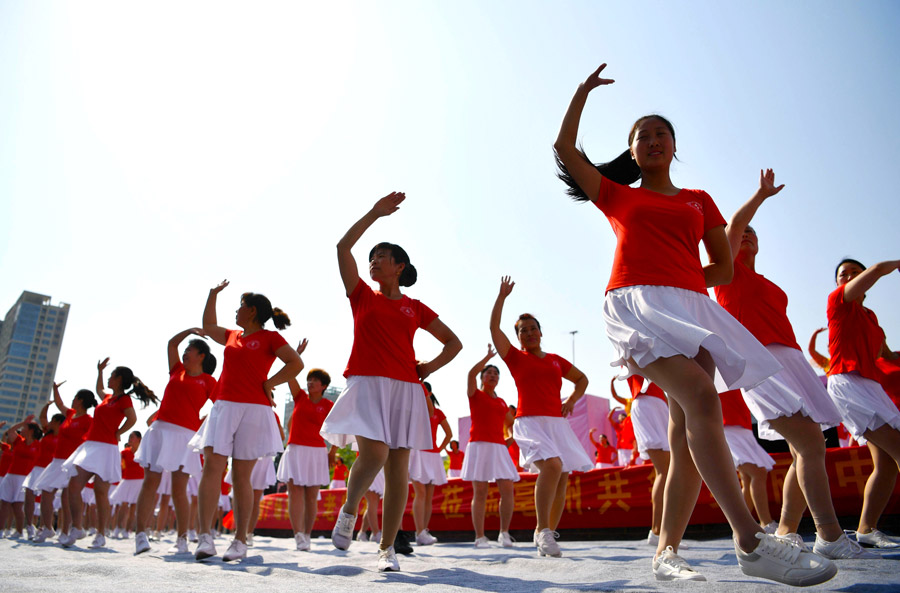'Gyrating grannies' in step with aging society
By Xu Junqian | China Daily | Updated: 2018-01-19 09:10

Inspired by tradition
Dressed in traditional emerald green costumes and jetblack sunglasses, the team's performance was inspired by Chinese shadow puppetry, an ancient form of entertainment and craftsmanship believed to have originated in Tangshan.
Carnation finished third in the competition, which pleased Yang. "We are happy with the result, considering that we spent less than two months preparing for the contest. Besides, none of us started dancing to become a dancing queen. We just want to exercise and kill time," she said.
Square dancing started to gain popularity in China in the 1990s. At the time, it was a casual activity that required little organization and, like today, it took place across the nation's parks and pedestrian streets.
The name derives from these urban locations, and the activity should not be confused with the traditional dances performed in the United States.
Despite the origins of the dance, some dama have performed overseas at landmarks such as the Louvre in Paris and Red Square in Moscow.
Today, the activity is so popular that it has even been considered a sport in China. Last year, square dancing was included in China's National Games, which took place in Tianjin, for the first time.
According to Li Xiangru, a professor at Capital University of Physical Education and Sports, at least 10,000 provincial-and national-level competitions were held across the country last year.
Moreover, the State General Administration of Sports estimates that there were around 180 million active square dancers in China at the end of last year.
"Regardless of the social and entertainment functions of square dancing, it is essentially a sport. And sports need judges, ratings and winners to keep them moving forward," Li said.
The activity's popularity has also translated into business opportunities for many enter-prises. At the first Square Dance Development Forum, held in Hainan province in November, Peng Qiang, founder and CEO of WYZ Sports in Beijing, called square dancers "walking wallets" during a speech in which he addressed the activity's business potential.
"In China, dancing grannies are usually the accountants of their household. Reaching them means reaching the bank accounts of millions of families in the country," Peng told China Daily USA in a phone interview.
Peng's agency, established at the end of 2016, links sporting activities with corporate sponsorship. Last year, WYZ Sports helped 20 clients sponsor more than 40 sporting events, half of which were marathons.
He noted that while square dancing is unlikely to reach the size and value of marathons in China-about 500 marathons were held in the country last year, each attracted sponsorship of more than 5 million yuan ($777,000)-the activity has its own appeal.
"Square dancing has the clearest and most precise participant profile-middle-aged and elderly Chinese women," said Peng, who added that healthcare companies, beauty salons and banks selling investment products make up the lion's share of sponsors for square dancing contests in China.
He believes the amounts sponsors are willing to provide could rise in the future. China is home to the world's fastest-growing aging population, and 480 million people age 60 and older will account for about 35 percent of the population by 2050, according to media reports. If the sport maintains its popularity the number of square dancers will obviously rise as the population ages.
























